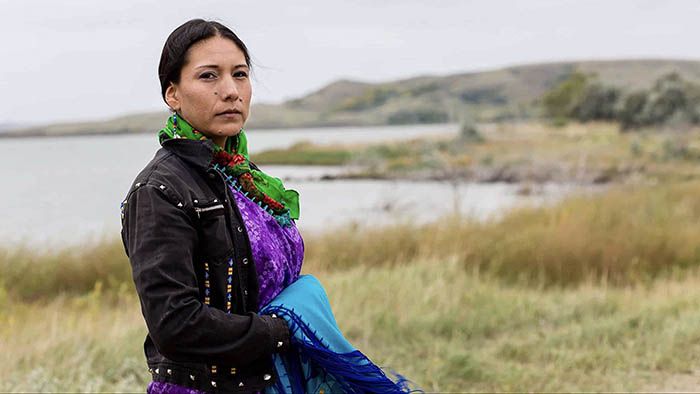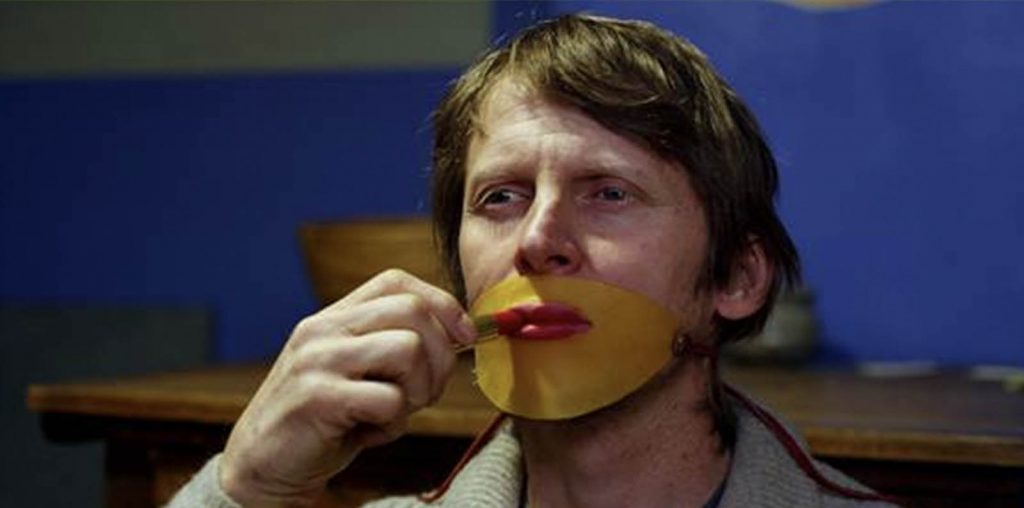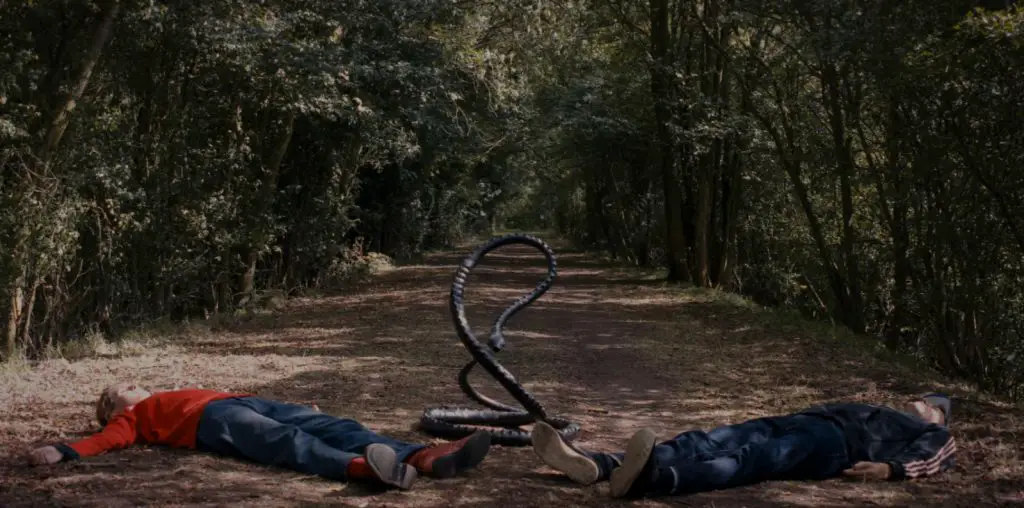
SLAMDANCE FILM FESTIVAL 2021 REVIEW! Roger Ebert once wrote that “movies are like a machine that generates empathy.” And while that is indeed the case, they can also be a processing plant for outrage with documentaries such as End of the Line: The Women of Standing Rock.
A grassroots movement arose in 2016 when it was announced that the Dakota Access oil pipeline would be rerouted through the land of the indigenous people of South Dakota, desecrating ancient sacred sites, devastating property values, and posing a threat to the source of their drinking water.
End of the Line takes viewers inside the resistance as construction workers edge closer to their land. Leaders from Standing Rock and surrounding Native American communities gelled together to set up camp along the proposed area in peaceful protest. From the encampment, we witness the growing militarization of their opponents and the lack of consideration they receive from the government for their most basic of rights. Director Shannon Kring weaves the camera in and out of the yurts and temporary homes within the Sacred Stone Camp, introducing the audience to the iron-willed warriors of this movement. But she also takes time to shed light on the past sacrifices that gave them their foundational strength.
Along the banks of the Missouri River, we meet people such as Wašté Win Young, a Hunkpapa Lakota and young mother of four, who was arrested during one of her prayer protests; Phyllis Young, an elder Hunkpapa Lakota who tells us of her four decades of struggles for Native American rights; Vanessa “Sioux-Z” Dundon, a Navajo mother of four who, in her second month at the encampment was pelted directly in her eye by a gas canister shot into the crowd by police.

“…Native American communities gelled together to set up camp along the proposed area in peaceful protest.”
Additionally, Kring focuses on others within the encampment who recount decades of systemic marginalization, like Frances Zypher, a Yankton Sioux Tribe member, who describes the resulting decades of drug problems within her community. Sioux member Frances “Punchy” Hart tearfully recounts abuse she and others received at Christian church-run boarding schools decades ago, fueling her determination for providing a better life for her grandchildren.
Kring provides archival footage of early “assimilation” films, depicting the “savage and barbaric” ways of Navajo contrasted to the colonized way of life. Decades of institutional reinforcement of this belief took their toll, driving many to drugs to mask the feeling of inadequacy. “We can not be balanced people if we are not able to recognize our cultural history,” she said.
Kring intercuts these past tales with front-line footage of the protests. As they wave banners stating “We Have No Weapons” and chants of “We are peaceful,” we witness the pipeline construction project’s artillery grow. From fire hoses spraying protesters in the frigid Dakota nights to rubber bullets fired within the crowds, Kring’s camera captures the struggle. Like John Williams’ iconic Jaws theme, we hear the pipeline project’s helicopter buzz overhead periodically, signaling that danger is imminent.
Filled with stunning still shots of the sacred landscape and access to intimate moments within its subjects’ lives, the audience is provided with the roots of this revolt, roots that are fed from the very same waters that are threatened by this project. Kring paints a moving, poignant portrait of courage, determination, and tenacity in the face of overwhelming odds and eloquently honors the women who serve as the protest’s oppositional foundation. Their fight to merely be treated with humanity is ongoing, but End of the Line: The Women of Standing Rock serves as a testament to their unbending spirit.
End of the Line: The Women of Standing Rock screened at the 2021 Slamdance Film Festival.

"…a moving, poignant portrait of courage, determination, and tenacity..."



[…] current film End of the flagpole focused on the female voices leading the prosecution (many of whom also appear here) and the […]
[…] portrait of courage, determination, and tenacity in the face of overwhelming odds” Rob Rector, Film Threat […]
I watched End of The Line:Women of Standing Rock and I felt honoured to have this opportunity being as I live way across the other side of the world.I went as a traveller to Wolfpoint, Montana and the people couldn’t drink the water as the oil had seeped into the ground.I was bought up in the bush of the Western Woodland in Western Australia and most times we were reliant on waterholes or large drums that collected rain water.I went to the Navajo reservation in Arizona to a place that hadn’t rained for four years.People in the city cannot imagine a sight of one tree growing in that sparse landscape protected by wire so the goats and sheep would not eat it.If we don’t have water we don’t have human beings, plants and animals.I rate this movie 10/10 as without water we cannot live.